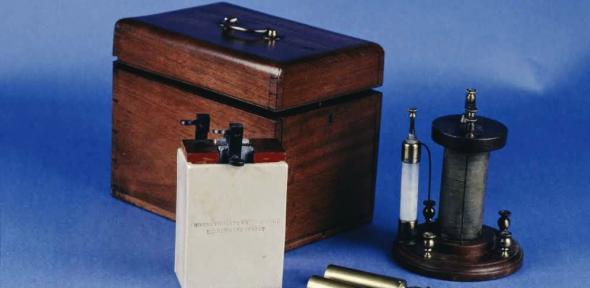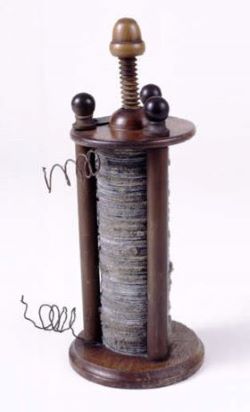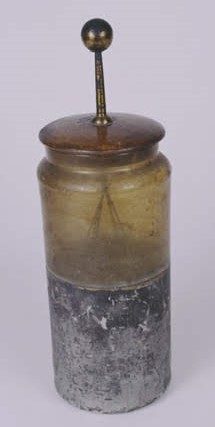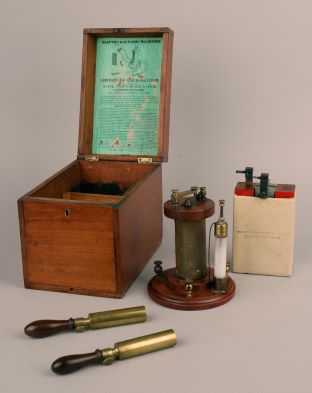Galvani's first crucial result in his frog experiments was the product of good fortune: while investigating the effect of atmospheric electricity on "prepared" specimens, Galvani and his assistants hung frog legs from an iron railing, with brass hooks dangling from their spinal nerves. One hook touched the railing, and the attached frog's leg kicked. Placing the legs and hooks on other metals and doing the same had a similar effect, but nothing happened when they placed the frog on non-conducting materials like wood, glass, or resin.
Instruments as Frogs: the Leyden Jar and Voltaic Pile
By the late 18th century, natural philosophers knew that electricity could stimulate muscular motion. What kind of electricity was it, though, and how was it produced? To answer this question, Galvani and Volta each pointed to an instrument used for storing or producing electric current whose operation was more convincingly understood than the frog's kick: Galvani said the frog's leg works like a Leyden jar, and Volta compared it to his own, new invention, the battery pile.
When Galvani hung a frog's leg over his iron banister and saw it kick, a familiar electrical instrument came to mind:
"These results surprised us greatly and led us to suspect that the electricity was inherent in the animal itself. An observation that a kind of circuit of a delicate nerve fluid is made from the nerves to the muscles when the phenomenon of contractions is produced, similar to the electric circuit which is completed in a Leyden jar, strengthened this suspicion and our surprise." (1)





